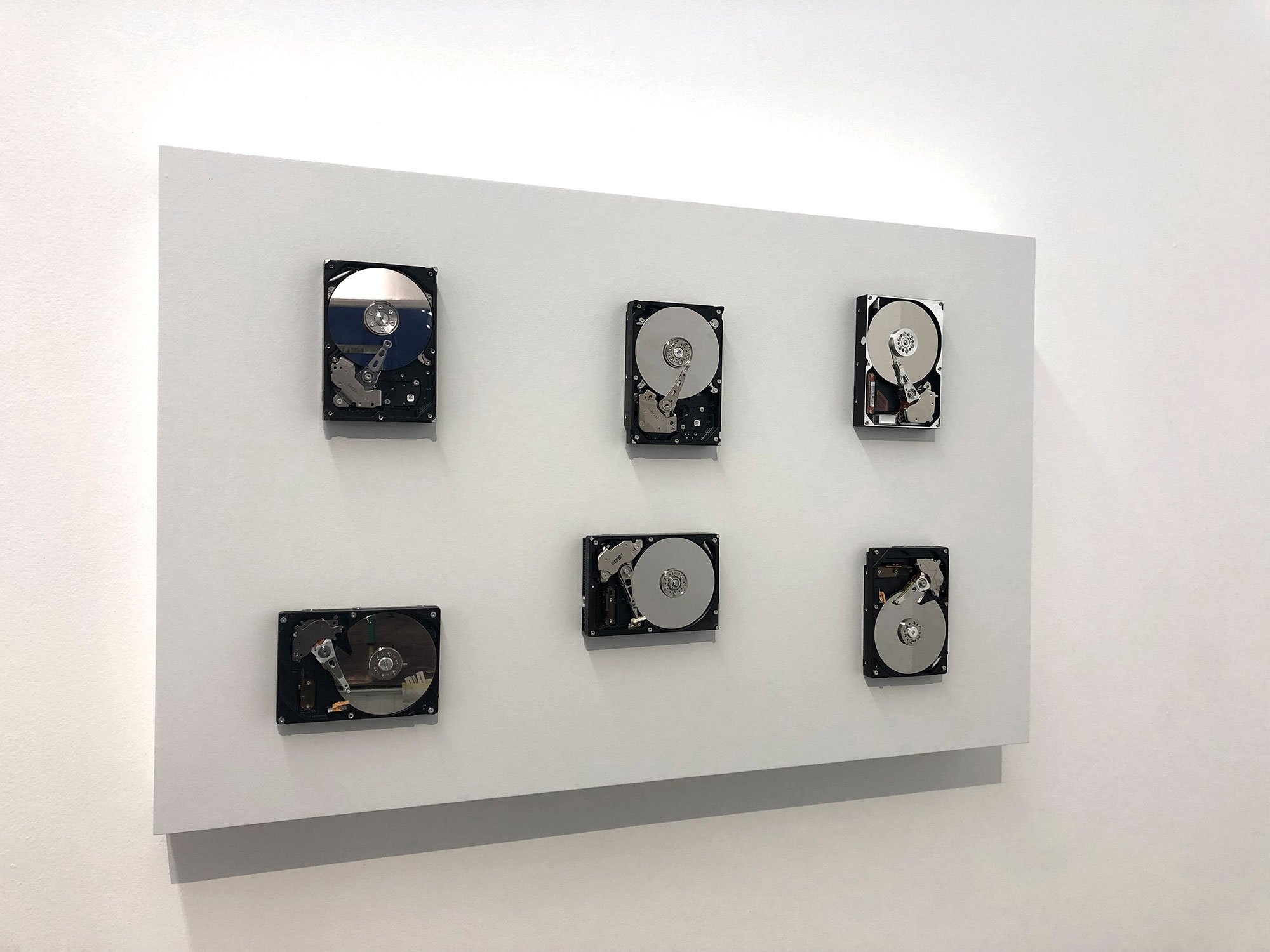Hysteresis
Installation | 2019
As a technical term, hysteresis refers to the phenomenon where a magnetic field 'remembers' its past. In this piece, six hard drives communicate with one another endlessly in a random sequence. They are programmed to sleep and wake during the course of the exhibition at random intervals, operating free from the creation of any explicit meaning. The installation is not intended to be a response to digital memory itself, but rather to reveal the inner workings of the electromechanical mechanism in memory recording technology. The hard drives in this piece are controlled by random functions. Hysteresis operates beyond the autonomous, self-referential system as defined by Kittler; it pertains instead to the system's structure—specifically, to its functions and events. In this way, the 'conscious experience' of the hard drives is not about their content (information), but about their theatrical existence and the temporalities of objects in a system interacting with each other. Hysteresis challenges the reality of the system and reminds us, as Husserl put it, that “a system is a fraud in itself.” By perpetuating failure in their mechanisms or undergoing changes in their function, the hard drives produce neither facts nor fictions, but something in between: pure noise, through which the machine resists linguistic communication. Detached from their original functionality, the hard drives have become unstable sensory objects within the flow of electric current, both low and high. They are situated on the threshold between 'format' and analog signals. The audience is not merely an observer of this piece; their presence is actively engaged by the installation as well.
